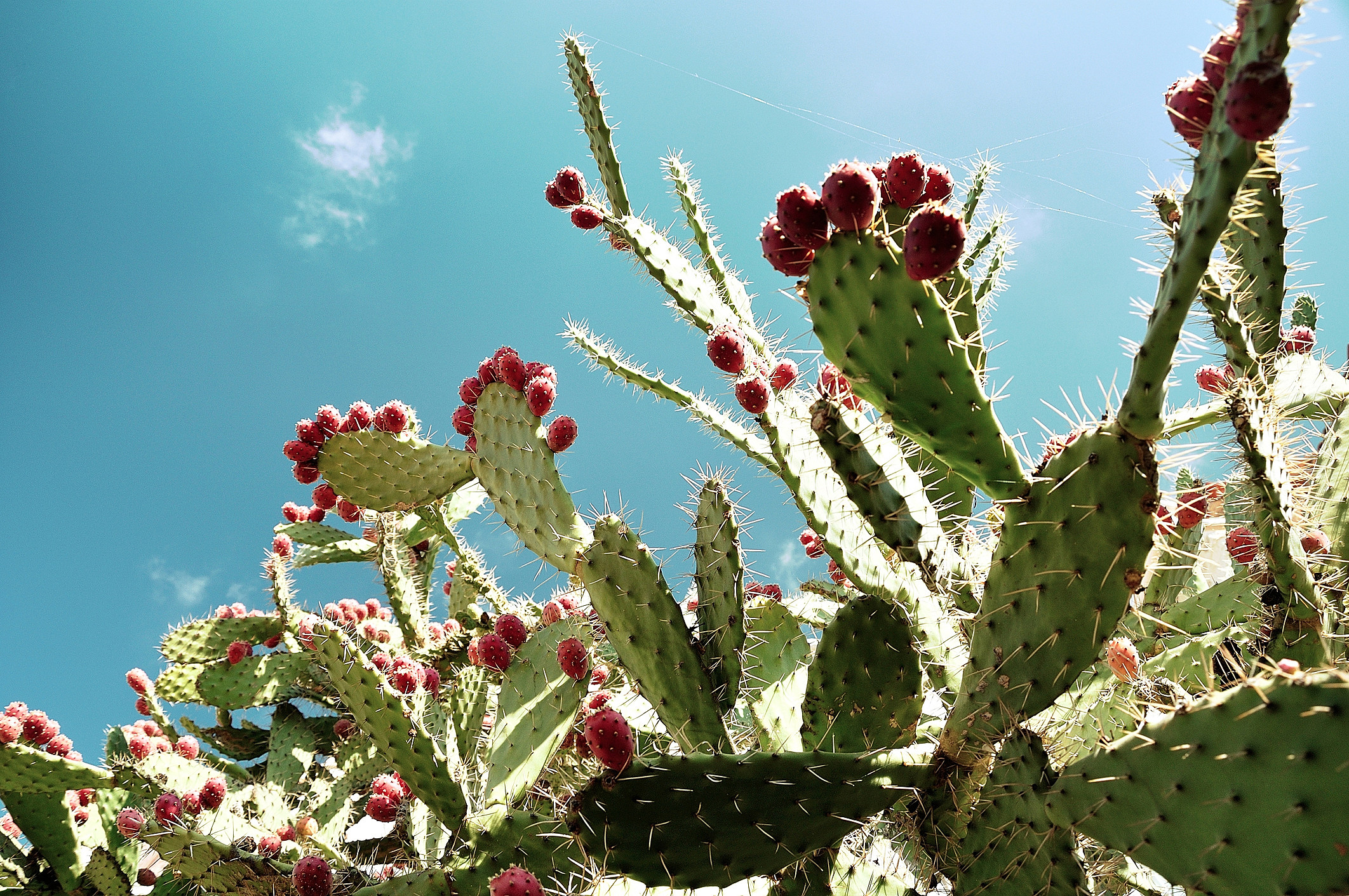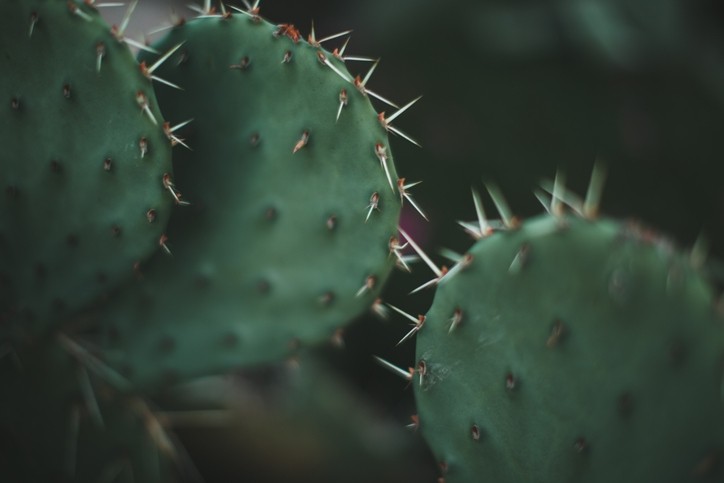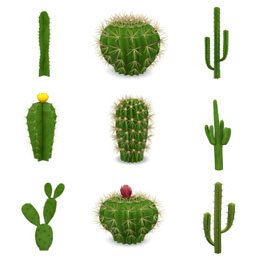Most Common Cactus Questions: 17. Can Cacti Be Used For Medicinal Purposes?
If you've ever wondered if cacti are more than just funky desert decor, you're in for a delightful surprise. In this article, we'll explore the fascinating world of medicinal cacti and uncover the hidden healing powers of these prickly plants. From treating digestive issues to relieving inflammation, cacti have been used for centuries in traditional medicine. So brace yourself for a journey through the desert as we discover the potential health benefits and ancient remedies associated with these spiky wonders. Get ready to be amazed by the extraordinary potential of cacti as natural healers.
Cacti as Medicinal Plants
Cacti have long been recognized for their unique and intriguing appearance, but did you know that many cacti also possess medicinal properties? These fascinating plants, native to arid regions around the world, have been used for centuries by various cultures for their therapeutic benefits. In this comprehensive article, we will explore the historical use, traditional medicinal practices, types of medicinal cacti, active compounds present in these plants, common medicinal uses, scientific research, practical methods for using cacti in medicinal formulations, the commercial industry surrounding cacti, cultural and ethical considerations, as well as challenges and future prospects.
Overview of Cacti
Cacti, scientifically known as the Cactaceae family, are succulent plants adapted to survive in harsh desert conditions. They have distinct physical characteristics such as their thick, fleshy stems and modified leaves known as spines or needles. These spines help to reduce water loss and protect the cacti from predators. With over 1,500 known species, cacti exhibit remarkable diversity in terms of size, shape, and color. Some cacti are known for their beautiful blossoms, while others have interesting textures or unique growth habits.
Historical Use
The use of cacti for medicinal purposes dates back centuries and has been documented in various cultures around the world. Indigenous communities in North and South America have a rich history of utilizing cacti for their healing properties. The Native American tribes, such as the Apache, Hopi, and Navajo, utilized different species of cacti to treat a variety of ailments. Similarly, the indigenous peoples of Mexico, including the Aztecs and Tarahumara, revered cacti as sacred plants with medicinal value.
Traditional Medicinal Practices
Traditional medicinal practices involving cacti were passed down through generations and were often based on empirical knowledge and observations. Cacti were used to treat a wide range of conditions, including digestive problems, skin conditions, wound healing, pain relief, and cardiovascular health. The traditional methods of preparation and administration varied among cultures, with some tribes consuming raw cacti, while others prepared teas, poultices, or infusions. These traditional practices laid the foundation for the modern use of cacti as medicinal plants.
Types of Medicinal Cacti
There are several species of cacti that have gained recognition for their medicinal properties. Let's explore some of the most notable ones:
Prickly Pear (Opuntia spp.)
The Prickly Pear cactus is a genus of cacti native to the Americas. It is known for its flat, oval-shaped pads covered in spines and its vibrant fruits. Prickly Pear has been used traditionally for its anti-inflammatory and anti-viral properties. It is believed to aid in digestive health, promote wound healing, and improve blood sugar control.
Peyote (Lophophora williamsii)
Peyote is a small, spineless cactus native to the deserts of Mexico and southwestern United States. It has been used for centuries by indigenous tribes for its hallucinogenic properties and for spiritual and religious ceremonies. In recent years, scientific research has focused on the potential therapeutic effects of the psychoactive compounds found in Peyote, such as mescaline, for mental health conditions.
Dragon Fruit (Hylocereus undatus)
Dragon Fruit, also known as Pitaya, is a climbing cactus that originated in Central America but is now cultivated worldwide. Its vibrant pink or yellow exterior and white or red flesh make it a popular fruit, but it also has medicinal uses. Dragon Fruit is rich in antioxidants and vitamin C, which contribute to its potential immune-boosting and anti-inflammatory properties.
Night-Blooming Cereus (Selenicereus spp.)
The Night-Blooming Cereus is a climbing cactus with large, fragrant flowers that only bloom at night. While it is primarily grown for its ornamental value, certain species of Night-Blooming Cereus have been used in traditional medicine. The flowers are believed to possess anti-inflammatory and analgesic properties and have been used topically to relieve pain and inflammation.
San Pedro Cactus (Echinopsis pachanoi)
The San Pedro cactus, also known as the Wachuma cactus, is native to the Andean region of South America. It has a long history of traditional use in shamanic rituals and healing practices, primarily for its psychoactive effects. The cactus contains mescaline, a hallucinogenic compound with potential therapeutic applications for mental health disorders.
Barrel Cactus (Ferocactus spp.)
Barrel cacti are large, round cacti with prominent ribs that resemble the shape of a barrel, hence their name. Some species of Barrel cactus, such as Ferocactus wislizeni, have been traditionally used for their medicinal properties. This cactus is believed to possess anti-inflammatory and analgesic effects and has been used topically to relieve pain and reduce swelling.

This image is property of townsquare.media.
Active Compounds in Medicinal Cacti
The medicinal properties of cacti can be attributed to the presence of various active compounds. These compounds include:
Alkaloids
Many cacti contain alkaloids, which are nitrogen-containing organic compounds. Alkaloids in cacti, such as mescaline in Peyote, contribute to the psychoactive effects of these plants. Other alkaloids found in cacti, such as hordenine and tyramine, possess potential pharmacological properties such as vasoconstriction and anti-inflammatory effects.
Vitamins and Minerals
Cacti, especially fruits like Prickly Pear and Dragon Fruit, are rich in vitamins and minerals. These include vitamin C, vitamin E, vitamin K, calcium, magnesium, and potassium. The presence of these essential nutrients contributes to the potential health benefits offered by cacti, such as immune support, skin health, and bone strength.
Polysaccharides
Polysaccharides are complex carbohydrates found in cacti that exhibit various bioactivities. These compounds have been studied for their potential antioxidant, immunomodulatory, and anti-inflammatory effects. Polysaccharides found in cacti, such as pectin and arabinogalactan, may contribute to the overall therapeutic properties of these plants.
Fatty Acids
Certain cacti, particularly those with edible fruits and seeds, contain beneficial fatty acids. These include omega-3 and omega-6 fatty acids, which are essential for maintaining optimal health. Fatty acids play a crucial role in supporting cardiovascular health, reducing inflammation, and promoting healthy skin and hair.
Phytochemicals
Phytochemicals are natural compounds found in plants that are responsible for their color, flavor, and aroma. Many cacti contain phytochemicals, such as betalains and flavonoids, which possess antioxidant and anti-inflammatory properties. These compounds contribute to the potential health benefits of cacti, including their cancer-fighting and anti-aging properties.
Common Medicinal Uses of Cacti
Cacti have been used for a wide range of medicinal purposes throughout history. Here are some of the common uses:
Digestive Health
Certain species of cacti, such as Prickly Pear, have been traditionally used to promote digestive health. The high fiber content of cacti aids in regulating bowel movements and promoting regularity. Additionally, cacti possess mucilage, a gel-like substance that coats the digestive tract and may help soothe irritation and inflammation.
Skin Conditions
Cactus-based creams, gels, and ointments are popular for treating various skin conditions. The moisturizing properties of cacti help hydrate the skin and promote its elasticity. Cacti extracts may also possess anti-inflammatory and wound-healing properties, making them effective for soothing irritations and aiding in the recovery of minor skin injuries.
Wound Healing
The anti-inflammatory and antimicrobial properties present in certain cacti can aid in the healing of wounds. Topical application of cactus-based formulations may help reduce swelling, prevent infection, and accelerate the regeneration of skin cells.
Weight Management
Cacti, particularly the fruits, are low in calories and rich in fiber. Including cacti in the diet may help promote a feeling of fullness and reduce overall calorie intake. Furthermore, the presence of antioxidants and other bioactive compounds in cacti contributes to their potential role in supporting weight management and metabolic health.
Pain Relief
Topical application of cactus-based formulations, particularly those containing compounds such as alkaloids and fatty acids, may help alleviate pain. These formulations may be effective in relieving minor muscular and joint discomfort.
Cardiovascular Health
Certain compounds found in cacti, such as antioxidants and fatty acids, contribute to their potential cardiovascular benefits. Regular consumption of cacti, especially those rich in antioxidants like Prickly Pear, contributes to reducing oxidative stress and inflammation, promoting healthy blood pressure levels, and supporting overall heart health.
Diabetes Management
Certain species of cacti, including Prickly Pear, have shown potential in managing blood sugar levels. The presence of fiber, antioxidants, and other bioactive compounds in cacti may contribute to their ability to improve insulin sensitivity and regulate glucose metabolism.
Antioxidant Properties
Cacti contain various antioxidants, such as vitamin C and betalains, which help protect the body against oxidative stress caused by free radicals. Antioxidants play a crucial role in maintaining healthy cells, boosting the immune system, and reducing the risk of chronic diseases, including cancer and cardiovascular disorders.
Anti-Inflammatory Effects
Inflammation is a natural response of the body to injury or infection. However, chronic inflammation can contribute to the development of various diseases. Certain compounds present in cacti, such as flavonoids and polysaccharides, possess anti-inflammatory properties that may help alleviate symptoms associated with inflammation and promote overall well-being.
Immune Boosting
The presence of antioxidants, vitamins, and minerals in cacti contributes to their potential immune-boosting properties. Regular consumption of cacti, particularly those rich in vitamin C, may help support a healthy immune system and enhance the body's ability to fight off infections and illnesses.

This image is property of www.nutraingredients.com.
Scientific Research on Medicinal Cacti
Over the years, several studies have focused on the efficacy and safety of cacti for medicinal purposes. Let's explore the scientific research conducted on medicinal cacti.
Studies on Efficacy
Numerous studies have investigated the therapeutic potential of various compounds found in cacti. These studies have shown promising results regarding their effects on various health conditions. For example, studies have demonstrated the anti-inflammatory and antioxidant properties of cacti, particularly in relation to skin conditions and digestive health. Other studies have explored the potential anti-diabetic effects of cacti, highlighting their ability to regulate blood sugar levels.
Clinical Trials and Case Studies
Clinical trials and case studies have also been conducted to further explore the medicinal properties of cacti. These studies aim to evaluate the safety, efficacy, and optimal dosages of cacti-based formulations. While more research is needed to draw definitive conclusions, the initial findings suggest that cacti have the potential to be valuable additions to natural medicine options.
Potential Side Effects and Safety
While cacti are generally considered safe for consumption and topical application, it is important to note that individual reactions may vary. Some cacti, such as Peyote, possess psychoactive compounds that may cause hallucinations and other mental effects. Additionally, cacti may cause allergic reactions in certain individuals. It is recommended to consult with a healthcare professional or herbalist before using cacti for medicinal purposes, especially if you have any known allergies or medical conditions.
Practical Methods for Using Cacti in Medicinal Formulations
Cacti can be utilized in various medicinal formulations and preparations. Here are some practical methods for using cacti effectively:
Preparation Techniques
Cacti can be prepared in different ways, depending on the desired medicinal use. Some common preparation techniques include drying the cactus stems and grinding them into a powder for encapsulation or use in teas, infusing the cactus in oil for topical applications, or extracting the active compounds through solvent-based methods to create tinctures or extracts.
Dosage and Administration
The appropriate dosage and administration of cacti-based formulations vary depending on the specific cactus species and the desired health outcome. It is important to follow the recommended dosages provided by healthcare professionals, herbalists, or product labeling. Topical formulations should be applied as directed, and for oral consumption, it is best to start with a lower dose and gradually increase as needed.
Combining Cacti with Other Plants or Medications
Cacti can be combined with other plants or medications to enhance their therapeutic effects or mitigate potential side effects. However, it is essential to consult with a healthcare professional or herbalist before combining cacti with other substances to ensure compatibility and avoid any possible interactions or adverse effects.
Cautions and Precautions
While cacti are generally safe when used appropriately, there are a few precautions to consider. Pregnant or breastfeeding individuals should exercise caution when using cacti and consult with their healthcare provider before doing so. Additionally, individuals with known allergies to cacti or related plants should avoid using cacti-based products. If any adverse reactions occur, discontinue use and seek medical attention.

This image is property of medicinalherbinfo.org.
Commercial Products and Industry
The growing interest in natural and traditional remedies has spurred the development of a commercial industry surrounding cacti. Here are some examples of how cacti are utilized in various commercial products:
Pharmaceutical Applications
Pharmaceutical companies have begun to explore the potential of cacti in the development of new drugs. Compounds found in cacti, such as mescaline, are being studied for their therapeutic potential in mental health disorders and chronic pain management. However, it is important to note that certain cacti, such as Peyote, are protected species due to their cultural and ecological significance.
Health Supplements and Herbal Remedies
Cacti-based health supplements and herbal remedies are becoming increasingly popular. These products often come in the form of capsules, powders, teas, or tinctures. They are marketed for their various health benefits, ranging from immune support and digestive health to skin rejuvenation and pain relief.
Cosmetics and Skincare Products
The moisturizing and antioxidant properties of cacti make them valuable ingredients in cosmetics and skincare products. Cactus extracts are often incorporated into facial moisturizers, serums, and body lotions to hydrate the skin, reduce inflammation, and promote youthful-looking skin.
Consumer Demand and Market Trends
As consumers become more conscious of natural and sustainable products, the demand for cacti-based products has significantly increased. The market for cacti-based health supplements, herbal remedies, cosmetics, and skincare products continues to expand. It is essential for consumers to research and choose reputable brands that source their cacti sustainably and adhere to ethical practices.
Cultural, Ethical, and Legal Considerations
Cacti hold cultural and spiritual significance to many indigenous communities. It is important to approach the use of cacti with cultural sensitivity and respect. Additionally, due to the ecological importance and conservation concerns surrounding certain species of cacti, regulations and legal frameworks exist to protect them. Harvesting and selling protected species, such as Peyote, without the proper permits or licenses is illegal in many countries.
Ethnobotanical Perspectives
Cacti play a vital role in the cultural heritage and traditional practices of numerous indigenous communities. They are considered sacred plants and are often used in spiritual and healing ceremonies. When engaging with cacti from an ethnobotanical perspective, it is crucial to respect the cultural significance and knowledge of these plants held by indigenous communities.
Conservation Efforts
Many species of cacti, including those with medicinal properties, are threatened due to habitat destruction, overharvesting, and illegal trade. Organizations and conservationists are working to raise awareness and implement sustainable practices for the cultivation and harvesting of cacti. It is important to support and engage in sustainable practices to ensure the long-term viability of these valuable plants.
Legal Status and Regulations
The legal status of cacti varies depending on the species and the country in which they are found. Protected species, such as Peyote and certain types of barrel cacti, are subject to strict regulations to ensure their conservation. It is crucial to be aware of local laws and regulations regarding the cultivation, harvesting, and trade of cacti to prevent illegal activities.

This image is property of images.hive.blog.
Challenges and Future Prospects
Although cacti have shown immense potential as medicinal plants, several challenges exist in their utilization and research. Here are some of the challenges faced and the future prospects for medicinal cacti:
Continued Research and Development
While there is a growing body of research on the medicinal properties of cacti, further studies are needed to fully understand their therapeutic potential. More rigorous clinical trials, dosage optimization studies, and mechanistic investigations are essential to validate the traditional uses of cacti and inform evidence-based recommendations.
Standardization of Medicinal Cacti
The lack of standardization in cacti-based products poses challenges in terms of quality control and dosing accuracy. Establishing standardized protocols for cultivation, harvesting, and processing of medicinal cacti is crucial to ensure consistent and reliable products for consumers.
Sustainable Harvesting and Cultivation
Sustainable harvesting and cultivation practices are essential to protect wild populations of cacti and ensure their long-term availability. Initiatives promoting responsible harvesting practices and the cultivation of medicinal cacti can help conserve these plants and support the communities involved in their production.
Cactus-derived Pharmaceuticals
Continued research on the active compounds found in cacti may lead to the development of novel pharmaceuticals. Cactus-derived drugs may offer alternative treatments for various health conditions, including mental health disorders, chronic pain, and skin diseases. However, ethical considerations, cultural preservation, and sustainable sourcing must be prioritized in the pharmaceutical industry's exploration of cacti.
Conclusion
Cacti, with their unique characteristics and rich history, have emerged as valuable medicinal plants. From traditional use to scientific research, the potential therapeutic benefits of cacti are increasingly being recognized. Although challenges exist, continued research, standardized practices, and sustainable approaches can pave the way for the responsible utilization of cacti in medicinal formulations. As the demand for natural remedies grows, it is essential to explore the vast potential of cacti and incorporate them into our healthcare practices while respecting their cultural significance and preserving their ecosystems.
